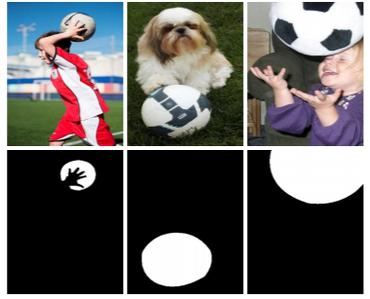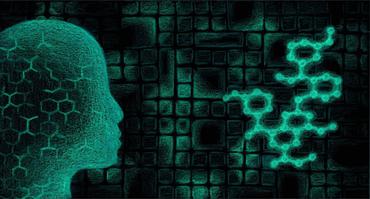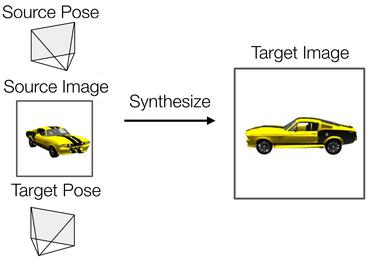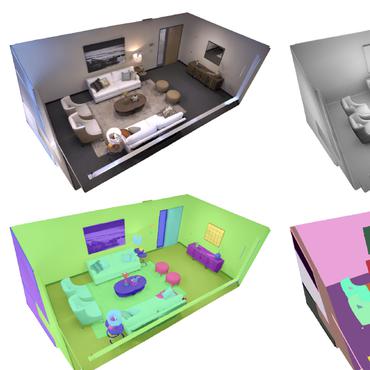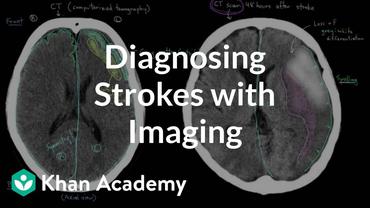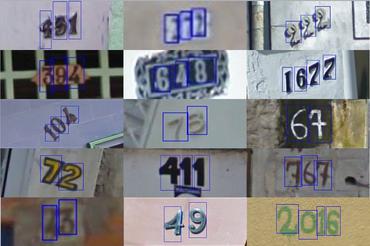Search Results for author: Dimitris Samaras
Found 106 papers, 36 papers with code
TopoGAN: A Topology-Aware Generative Adversarial Network
no code implementations • ECCV 2020 • Fan Wang, Huidong Liu, Dimitris Samaras, Chao Chen
We show in experiments that our method generates synthetic images with realistic topology.
MI-NeRF: Learning a Single Face NeRF from Multiple Identities
no code implementations • 29 Mar 2024 • Aggelina Chatziagapi, Grigorios G. Chrysos, Dimitris Samaras
In this work, we introduce a method that learns a single dynamic neural radiance field (NeRF) from monocular talking face videos of multiple identities.
Decoding the visual attention of pathologists to reveal their level of expertise
no code implementations • 25 Mar 2024 • Souradeep Chakraborty, Dana Perez, Paul Friedman, Natallia Sheuka, Constantin Friedman, Oksana Yaskiv, Rajarsi Gupta, Gregory J. Zelinsky, Joel H. Saltz, Dimitris Samaras
We present a method for classifying the expertise of a pathologist based on how they allocated their attention during a cancer reading.
Self-supervised co-salient object detection via feature correspondence at multiple scales
1 code implementation • 17 Mar 2024 • Souradeep Chakraborty, Dimitris Samaras
Extensive experiments on three CoSOD benchmark datasets show that our self-supervised model outperforms the corresponding state-of-the-art models by a huge margin (e. g. on the CoCA dataset, our model has a 13. 7% F-measure gain over the SOTA unsupervised CoSOD model).
Rig3DGS: Creating Controllable Portraits from Casual Monocular Videos
no code implementations • 6 Feb 2024 • Alfredo Rivero, ShahRukh Athar, Zhixin Shu, Dimitris Samaras
Using a set of control signals, such as head pose and expressions, we transform them to the 3D space with learned deformations to generate the desired rendering.
SI-MIL: Taming Deep MIL for Self-Interpretability in Gigapixel Histopathology
1 code implementation • 22 Dec 2023 • Saarthak Kapse, Pushpak Pati, Srijan Das, Jingwei Zhang, Chao Chen, Maria Vakalopoulou, Joel Saltz, Dimitris Samaras, Rajarsi R. Gupta, Prateek Prasanna
Introducing interpretability and reasoning into Multiple Instance Learning (MIL) methods for Whole Slide Image (WSI) analysis is challenging, given the complexity of gigapixel slides.
Learned representation-guided diffusion models for large-image generation
1 code implementation • 12 Dec 2023 • Alexandros Graikos, Srikar Yellapragada, Minh-Quan Le, Saarthak Kapse, Prateek Prasanna, Joel Saltz, Dimitris Samaras
Generating images from learned embeddings is agnostic to the source of the embeddings.
Unsupervised and semi-supervised co-salient object detection via segmentation frequency statistics
no code implementations • 11 Nov 2023 • Souradeep Chakraborty, Shujon Naha, Muhammet Bastan, Amit Kumar K C, Dimitris Samaras
Our unsupervised model is a great pre-training initialization for our semi-supervised model SS-CoSOD, especially when very limited labeled data is available for training.
Zero-Shot Object Counting with Language-Vision Models
no code implementations • 22 Sep 2023 • Jingyi Xu, Hieu Le, Dimitris Samaras
Thus, we propose zero-shot object counting (ZSC), a new setting where only the class name is available during test time.
Controllable Dynamic Appearance for Neural 3D Portraits
no code implementations • 20 Sep 2023 • ShahRukh Athar, Zhixin Shu, Zexiang Xu, Fujun Luan, Sai Bi, Kalyan Sunkavalli, Dimitris Samaras
The surface normals prediction is guided using 3DMM normals that act as a coarse prior for the normals of the human head, where direct prediction of normals is hard due to rigid and non-rigid deformations induced by head-pose and facial expression changes.
Attention De-sparsification Matters: Inducing Diversity in Digital Pathology Representation Learning
no code implementations • 12 Sep 2023 • Saarthak Kapse, Srijan Das, Jingwei Zhang, Rajarsi R. Gupta, Joel Saltz, Dimitris Samaras, Prateek Prasanna
We propose DiRL, a Diversity-inducing Representation Learning technique for histopathology imaging.
PathLDM: Text conditioned Latent Diffusion Model for Histopathology
1 code implementation • 1 Sep 2023 • Srikar Yellapragada, Alexandros Graikos, Prateek Prasanna, Tahsin Kurc, Joel Saltz, Dimitris Samaras
To achieve high-quality results, diffusion models must be trained on large datasets.
Learning from Pseudo-labeled Segmentation for Multi-Class Object Counting
no code implementations • 15 Jul 2023 • Jingyi Xu, Hieu Le, Dimitris Samaras
In this paper, we point out that the task of counting objects of interest when there are multiple object classes in the image (namely, multi-class object counting) is particularly challenging for current object counting models.
SAM-Path: A Segment Anything Model for Semantic Segmentation in Digital Pathology
no code implementations • 12 Jul 2023 • Jingwei Zhang, Ke Ma, Saarthak Kapse, Joel Saltz, Maria Vakalopoulou, Prateek Prasanna, Dimitris Samaras
On these two datasets, the proposed additional pathology foundation model further achieves a relative improvement of 5. 07% to 5. 12% in Dice score and 4. 50% to 8. 48% in IOU.
Conditional Generation from Unconditional Diffusion Models using Denoiser Representations
1 code implementation • 2 Jun 2023 • Alexandros Graikos, Srikar Yellapragada, Dimitris Samaras
Our approach provides a powerful and flexible way to adapt diffusion models to new conditions and generate high-quality augmented data for various conditional generation tasks.
AVFace: Towards Detailed Audio-Visual 4D Face Reconstruction
no code implementations • CVPR 2023 • Aggelina Chatziagapi, Dimitris Samaras
In this work, we present a multimodal solution to the problem of 4D face reconstruction from monocular videos.
Computational Pathology: A Survey Review and The Way Forward
no code implementations • 11 Apr 2023 • Mahdi S. Hosseini, Babak Ehteshami Bejnordi, Vincent Quoc-Huy Trinh, Danial Hasan, Xingwen Li, Taehyo Kim, Haochen Zhang, Theodore Wu, Kajanan Chinniah, Sina Maghsoudlou, Ryan Zhang, Stephen Yang, Jiadai Zhu, Lyndon Chan, Samir Khaki, Andrei Buin, Fatemeh Chaji, Ala Salehi, Bich Ngoc Nguyen, Dimitris Samaras, Konstantinos N. Plataniotis
Computational Pathology CPath is an interdisciplinary science that augments developments of computational approaches to analyze and model medical histopathology images.
Generating Features with Increased Crop-related Diversity for Few-Shot Object Detection
no code implementations • CVPR 2023 • Jingyi Xu, Hieu Le, Dimitris Samaras
To mitigate this issue, we propose a novel variational autoencoder (VAE) based data generation model, which is capable of generating data with increased crop-related diversity.
Topology-Guided Multi-Class Cell Context Generation for Digital Pathology
no code implementations • CVPR 2023 • Shahira Abousamra, Rajarsi Gupta, Tahsin Kurc, Dimitris Samaras, Joel Saltz, Chao Chen
In digital pathology, the spatial context of cells is important for cell classification, cancer diagnosis and prognosis.
S-VolSDF: Sparse Multi-View Stereo Regularization of Neural Implicit Surfaces
no code implementations • ICCV 2023 • HaoYu Wu, Alexandros Graikos, Dimitris Samaras
We thus propose to regularize neural rendering optimization with an MVS solution.
Gazeformer: Scalable, Effective and Fast Prediction of Goal-Directed Human Attention
1 code implementation • CVPR 2023 • Sounak Mondal, Zhibo Yang, Seoyoung Ahn, Dimitris Samaras, Gregory Zelinsky, Minh Hoai
In response, we pose a new task called ZeroGaze, a new variant of zero-shot learning where gaze is predicted for never-before-searched objects, and we develop a novel model, Gazeformer, to solve the ZeroGaze problem.
Prompt-MIL: Boosting Multi-Instance Learning Schemes via Task-specific Prompt Tuning
1 code implementation • 21 Mar 2023 • Jingwei Zhang, Saarthak Kapse, Ke Ma, Prateek Prasanna, Joel Saltz, Maria Vakalopoulou, Dimitris Samaras
Compared to conventional full fine-tuning approaches, we fine-tune less than 1. 3% of the parameters, yet achieve a relative improvement of 1. 29%-13. 61% in accuracy and 3. 22%-27. 18% in AUROC and reduce GPU memory consumption by 38%-45% while training 21%-27% faster.
Unifying Top-down and Bottom-up Scanpath Prediction Using Transformers
1 code implementation • 16 Mar 2023 • Zhibo Yang, Sounak Mondal, Seoyoung Ahn, Ruoyu Xue, Gregory Zelinsky, Minh Hoai, Dimitris Samaras
Most models of visual attention aim at predicting either top-down or bottom-up control, as studied using different visual search and free-viewing tasks.
Token Sparsification for Faster Medical Image Segmentation
1 code implementation • 11 Mar 2023 • Lei Zhou, Huidong Liu, Joseph Bae, Junjun He, Dimitris Samaras, Prateek Prasanna
To this end, we reformulate segmentation as a sparse encoding -> token completion -> dense decoding (SCD) pipeline.
Zero-shot Object Counting
1 code implementation • CVPR 2023 • Jingyi Xu, Hieu Le, Vu Nguyen, Viresh Ranjan, Dimitris Samaras
By applying this model to all the candidate patches, we can select the most suitable patches as exemplars for counting.
 Ranked #4 on
Zero-Shot Counting
on FSC147
Ranked #4 on
Zero-Shot Counting
on FSC147
Local Learning on Transformers via Feature Reconstruction
no code implementations • 29 Dec 2022 • Priyank Pathak, Jingwei Zhang, Dimitris Samaras
In this paper, we propose a new mechanism for each local module, where instead of reconstructing the entire image, we reconstruct its input features, generated from previous modules.
Precise Location Matching Improves Dense Contrastive Learning in Digital Pathology
1 code implementation • 23 Dec 2022 • Jingwei Zhang, Saarthak Kapse, Ke Ma, Prateek Prasanna, Maria Vakalopoulou, Joel Saltz, Dimitris Samaras
Our method outperforms previous dense matching methods by up to 7. 2% in average precision for detection and 5. 6% in average precision for instance segmentation tasks.
Patch-level Gaze Distribution Prediction for Gaze Following
1 code implementation • 20 Nov 2022 • Qiaomu Miao, Minh Hoai, Dimitris Samaras
Gaze following aims to predict where a person is looking in a scene, by predicting the target location, or indicating that the target is located outside the image.
Unraveling Key Elements Underlying Molecular Property Prediction: A Systematic Study
1 code implementation • 26 Sep 2022 • Jianyuan Deng, Zhibo Yang, Hehe Wang, Iwao Ojima, Dimitris Samaras, Fusheng Wang
Herein, we conduct an extensive evaluation of representative models using various representations on the MoleculeNet datasets, a suite of opioids-related datasets and two additional activity datasets from the literature.
Gigapixel Whole-Slide Images Classification using Locally Supervised Learning
1 code implementation • 17 Jul 2022 • Jingwei Zhang, Xin Zhang, Ke Ma, Rajarsi Gupta, Joel Saltz, Maria Vakalopoulou, Dimitris Samaras
Histopathology whole slide images (WSIs) play a very important role in clinical studies and serve as the gold standard for many cancer diagnoses.
Target-absent Human Attention
1 code implementation • 4 Jul 2022 • Zhibo Yang, Sounak Mondal, Seoyoung Ahn, Gregory Zelinsky, Minh Hoai, Dimitris Samaras
In this paper, we propose the first data-driven computational model that addresses the search-termination problem and predicts the scanpath of search fixations made by people searching for targets that do not appear in images.
Diffusion models as plug-and-play priors
1 code implementation • 17 Jun 2022 • Alexandros Graikos, Nikolay Malkin, Nebojsa Jojic, Dimitris Samaras
We consider the problem of inferring high-dimensional data $\mathbf{x}$ in a model that consists of a prior $p(\mathbf{x})$ and an auxiliary differentiable constraint $c(\mathbf{x},\mathbf{y})$ on $x$ given some additional information $\mathbf{y}$.
Learning Probabilistic Topological Representations Using Discrete Morse Theory
no code implementations • 3 Jun 2022 • Xiaoling Hu, Dimitris Samaras, Chao Chen
We use discrete Morse theory and persistent homology to construct an one-parameter family of structures as the topological/structural representation space.
A Novel Framework for Characterization of Tumor-Immune Spatial Relationships in Tumor Microenvironment
no code implementations • 23 Apr 2022 • Mahmudul Hasan, Jakub R. Kaczmarzyk, David Paredes, Lyanne Oblein, Jaymie Oentoro, Shahira Abousamra, Michael Horowitz, Dimitris Samaras, Chao Chen, Tahsin Kurc, Kenneth R. Shroyer, Joel Saltz
Understanding the impact of tumor biology on the composition of nearby cells often requires characterizing the impact of biologically distinct tumor regions.
Self Pre-training with Masked Autoencoders for Medical Image Classification and Segmentation
1 code implementation • 10 Mar 2022 • Lei Zhou, Huidong Liu, Joseph Bae, Junjun He, Dimitris Samaras, Prateek Prasanna
Masked Autoencoder (MAE) has recently been shown to be effective in pre-training Vision Transformers (ViT) for natural image analysis.
Visual attention analysis of pathologists examining whole slide images of Prostate cancer
no code implementations • 17 Feb 2022 • Souradeep Chakraborty, Ke Ma, Rajarsi Gupta, Beatrice Knudsen, Gregory J. Zelinsky, Joel H. Saltz, Dimitris Samaras
To quantify the relationship between a pathologist's attention and evidence for cancer in the WSI, we obtained tumor annotations from a genitourinary specialist.
Lung Swapping Autoencoder: Learning a Disentangled Structure-texture Representation of Chest Radiographs
1 code implementation • 18 Jan 2022 • Lei Zhou, Joseph Bae, Huidong Liu, Gagandeep Singh, Jeremy Green, Amit Gupta, Dimitris Samaras, Prateek Prasanna
Well-labeled datasets of chest radiographs (CXRs) are difficult to acquire due to the high cost of annotation.
CoDiM: Learning with Noisy Labels via Contrastive Semi-Supervised Learning
no code implementations • 23 Nov 2021 • Xin Zhang, Zixuan Liu, Kaiwen Xiao, Tian Shen, Junzhou Huang, Wei Yang, Dimitris Samaras, Xiao Han
Labels are costly and sometimes unreliable.
 Ranked #5 on
Image Classification
on mini WebVision 1.0
Ranked #5 on
Image Classification
on mini WebVision 1.0
Multi-Class Cell Detection Using Spatial Context Representation
2 code implementations • ICCV 2021 • Shahira Abousamra, David Belinsky, John Van Arnam, Felicia Allard, Eric Yee, Rajarsi Gupta, Tahsin Kurc, Dimitris Samaras, Joel Saltz, Chao Chen
In digital pathology, both detection and classification of cells are important for automatic diagnostic and prognostic tasks.
FLAME-in-NeRF: Neural control of Radiance Fields for Free View Face Animation
no code implementations • 29 Sep 2021 • ShahRukh Athar, Zhixin Shu, Dimitris Samaras
In this work, we design a system that enables 1) novel view synthesis for portrait video, of both the human subject and the scene they are in and 2) explicit control of the facial expressions through a low-dimensional expression representation.
Efficient Semi-Discrete Optimal Transport Using the Maximum Relative Error between Distributions
no code implementations • 29 Sep 2021 • Huidong Liu, Ke Ma, Lei Zhou, Dimitris Samaras
If the \texttt{MRE} is smaller than 1, then every target point is guaranteed to have an area in the source distribution that is mapped to it.
FaceDet3D: Facial Expressions with 3D Geometric Detail Hallucination
no code implementations • 29 Sep 2021 • ShahRukh Athar, Albert Pumarola, Francesc Moreno-Noguer, Dimitris Samaras
Facial Expressions induce a variety of high-level details on the 3D face geometry.
Learning Surface Parameterization for Document Image Unwarping
no code implementations • 29 Sep 2021 • Sagnik Das, Ke Ma, Zhixin Shu, Dimitris Samaras
We also demonstrate the usefulness of our system by applying it to document texture editing.
SIDER: Single-Image Neural Optimization for Facial Geometric Detail Recovery
no code implementations • 11 Aug 2021 • Aggelina Chatziagapi, ShahRukh Athar, Francesc Moreno-Noguer, Dimitris Samaras
We present SIDER(Single-Image neural optimization for facial geometric DEtail Recovery), a novel photometric optimization method that recovers detailed facial geometry from a single image in an unsupervised manner.
FLAME-in-NeRF : Neural control of Radiance Fields for Free View Face Animation
no code implementations • 10 Aug 2021 • ShahRukh Athar, Zhixin Shu, Dimitris Samaras
In this work, we design a system that enables both novel view synthesis for portrait video, including the human subject and the scene background, and explicit control of the facial expressions through a low-dimensional expression representation.
Temporal Feature Warping for Video Shadow Detection
no code implementations • 29 Jul 2021 • Shilin Hu, Hieu Le, Dimitris Samaras
The current video shadow detection method achieves this goal via co-attention, which mostly exploits information that is temporally coherent but is not robust in detecting moving shadows and small shadow regions.
Attention based CNN-LSTM Network for Pulmonary Embolism Prediction on Chest Computed Tomography Pulmonary Angiograms
no code implementations • 13 Jul 2021 • Sudhir Suman, Gagandeep Singh, Nicole Sakla, Rishabh Gattu, Jeremy Green, Tej Phatak, Dimitris Samaras, Prateek Prasanna
In this study we propose a two-stage attention-based CNN-LSTM network for predicting PE, its associated type (chronic, acute) and corresponding location (leftsided, rightsided or central) on computed tomography (CT) examinations.
A Joint Spatial and Magnification Based Attention Framework for Large Scale Histopathology Classification
no code implementations • CVPR 2021 • Jingwei Zhang, Ke Ma, John Van Arnam, Rajarsi Gupta, Joel Saltz, Maria Vakalopoulou, Dimitris Samaras
To tackle these problems, we propose a novel spatial and magnification based attention sampling strategy.
Artificial Intelligence in Drug Discovery: Applications and Techniques
1 code implementation • 9 Jun 2021 • Jianyuan Deng, Zhibo Yang, Iwao Ojima, Dimitris Samaras, Fusheng Wang
Artificial intelligence (AI) has been transforming the practice of drug discovery in the past decade.
Hierarchical Proxy-based Loss for Deep Metric Learning
no code implementations • 25 Mar 2021 • Zhibo Yang, Muhammet Bastan, Xinliang Zhu, Doug Gray, Dimitris Samaras
In this paper, we present a framework that leverages this implicit hierarchy by imposing a hierarchical structure on the proxies and can be used with any existing proxy-based loss.
Topology-Aware Segmentation Using Discrete Morse Theory
no code implementations • ICLR 2021 • Xiaoling Hu, Yusu Wang, Li Fuxin, Dimitris Samaras, Chao Chen
In the segmentation of fine-scale structures from natural and biomedical images, per-pixel accuracy is not the only metric of concern.
End-to-End Piece-Wise Unwarping of Document Images
no code implementations • ICCV 2021 • Sagnik Das, Kunwar Yashraj Singh, Jon Wu, Erhan Bas, Vijay Mahadevan, Rahul Bhotika, Dimitris Samaras
Document unwarping attempts to undo the physical deformation of the paper and recover a 'flatbed' scanned document-image for downstream tasks such as OCR.
Physics-based Shadow Image Decomposition for Shadow Removal
2 code implementations • 23 Dec 2020 • Hieu Le, Dimitris Samaras
Inspired by physical models of shadow formation, we use a linear illumination transformation to model the shadow effects in the image that allows the shadow image to be expressed as a combination of the shadow-free image, the shadow parameters, and a matte layer.
 Ranked #2 on
Shadow Removal
on Adjusted ISTD
Ranked #2 on
Shadow Removal
on Adjusted ISTD
Localization in the Crowd with Topological Constraints
1 code implementation • 23 Dec 2020 • Shahira Abousamra, Minh Hoai, Dimitris Samaras, Chao Chen
Due to various challenges, a localization method is prone to spatial semantic errors, i. e., predicting multiple dots within a same person or collapsing multiple dots in a cluttered region.
Modeling Deep Learning Based Privacy Attacks on Physical Mail
1 code implementation • 22 Dec 2020 • Bingyao Huang, Ruyi Lian, Dimitris Samaras, Haibin Ling
Mail privacy protection aims to prevent unauthorized access to hidden content within an envelope since normal paper envelopes are not as safe as we think.
FaceDet3D: Facial Expressions with 3D Geometric Detail Prediction
no code implementations • 14 Dec 2020 • ShahRukh Athar, Albert Pumarola, Francesc Moreno-Noguer, Dimitris Samaras
The facial details are represented as a vertex displacement map and used then by a Neural Renderer to photo-realistically render novel images of any single image in any desired expression and view.
Intrinsic Decomposition of Document Images In-the-Wild
1 code implementation • 29 Nov 2020 • Sagnik Das, Hassan Ahmed Sial, Ke Ma, Ramon Baldrich, Maria Vanrell, Dimitris Samaras
However, document shadow or shading removal results still suffer because: (a) prior methods rely on uniformity of local color statistics, which limit their application on real-scenarios with complex document shapes and textures and; (b) synthetic or hybrid datasets with non-realistic, simulated lighting conditions are used to train the models.
Learning Clusterable Visual Features for Zero-Shot Recognition
no code implementations • 7 Oct 2020 • Jingyi Xu, Zhixin Shu, Dimitris Samaras
However, some testing data are considered "hard" as they lie close to the decision boundaries and are prone to misclassification, leading to performance degradation for ZSL.
Variational Feature Disentangling for Fine-Grained Few-Shot Classification
no code implementations • ICCV 2021 • Jingyi Xu, Hieu Le, Mingzhen Huang, ShahRukh Athar, Dimitris Samaras
We assume that the distribution of intra-class variance generalizes across the base class and the novel class.
 Ranked #14 on
Few-Shot Image Classification
on CUB 200 5-way 5-shot
Ranked #14 on
Few-Shot Image Classification
on CUB 200 5-way 5-shot
Distribution Matching for Crowd Counting
1 code implementation • NeurIPS 2020 • Boyu Wang, Huidong Liu, Dimitris Samaras, Minh Hoai
Existing crowd counting methods need to use a Gaussian to smooth each annotated dot or to estimate the likelihood of every pixel given the annotated point.
 Ranked #3 on
Crowd Counting
on UCF CC 50
Ranked #3 on
Crowd Counting
on UCF CC 50
Light Direction and Color Estimation from Single Image with Deep Regression
no code implementations • 18 Sep 2020 • Hassan A. Sial, Ramon Baldrich, Maria Vanrell, Dimitris Samaras
We present a method to estimate the direction and color of the scene light source from a single image.
A Study of Human Gaze Behavior During Visual Crowd Counting
no code implementations • 14 Sep 2020 • Raji Annadi, Yupei Chen, Viresh Ranjan, Dimitris Samaras, Gregory Zelinsky, Minh Hoai
Analyzing the collected gaze behavior of ten human participants on thirty crowd images, we observe some common approaches for visual counting.
From Shadow Segmentation to Shadow Removal
no code implementations • ECCV 2020 • Hieu Le, Dimitris Samaras
Our method achieves competitive shadow removal results compared to state-of-the-art methods that are trained with fully paired shadow and shadow-free images.
 Ranked #4 on
Shadow Removal
on Adjusted ISTD
Ranked #4 on
Shadow Removal
on Adjusted ISTD
Predicting Goal-directed Human Attention Using Inverse Reinforcement Learning
2 code implementations • CVPR 2020 • Zhibo Yang, Lihan Huang, Yupei Chen, Zijun Wei, Seoyoung Ahn, Gregory Zelinsky, Dimitris Samaras, Minh Hoai
These maps were learned by IRL and then used to predict behavioral scanpaths for multiple target categories.
Towards Better Opioid Antagonists Using Deep Reinforcement Learning
no code implementations • 26 Mar 2020 • Jianyuan Deng, Zhibo Yang, Yao Li, Dimitris Samaras, Fusheng Wang
Naloxone, an opioid antagonist, has been widely used to save lives from opioid overdose, a leading cause for death in the opioid epidemic.
Dataset of Segmented Nuclei in Hematoxylin and Eosin Stained Histopathology Images of 10 Cancer Types
1 code implementation • 18 Feb 2020 • Le Hou, Rajarsi Gupta, John S. Van Arnam, Yuwei Zhang, Kaustubh Sivalenka, Dimitris Samaras, Tahsin M. Kurc, Joel H. Saltz
To address this, we developed an analysis pipeline that segments nuclei in whole slide tissue images from multiple cancer types with a quality control process.
Self-supervised Deformation Modeling for Facial Expression Editing
no code implementations • 2 Nov 2019 • ShahRukh Athar, Zhixin Shu, Dimitris Samaras
In the "motion-editing" step, we explicitly model facial movement through image deformation, warping the image into the desired expression.
Exascale Deep Learning to Accelerate Cancer Research
no code implementations • 26 Sep 2019 • Robert M. Patton, J. Travis Johnston, Steven R. Young, Catherine D. Schuman, Thomas E. Potok, Derek C. Rose, Seung-Hwan Lim, Junghoon Chae, Le Hou, Shahira Abousamra, Dimitris Samaras, Joel Saltz
Using MENNDL--an HPC-enabled software stack for neural architecture search--we generate a neural network with comparable accuracy to state-of-the-art networks on a cancer pathology dataset that is also $16\times$ faster at inference.
Shadow Removal via Shadow Image Decomposition
3 code implementations • ICCV 2019 • Hieu Le, Dimitris Samaras
Training our model on this new augmented ISTD dataset further lowers the RMSE on the shadow area to 7. 4.
 Ranked #3 on
Shadow Removal
on Adjusted ISTD
Ranked #3 on
Shadow Removal
on Adjusted ISTD
Learning from Thresholds: Fully Automated Classification of Tumor Infiltrating Lymphocytes for Multiple Cancer Types
no code implementations • 9 Jul 2019 • Shahira Abousamra, Le Hou, Rajarsi Gupta, Chao Chen, Dimitris Samaras, Tahsin Kurc, Rebecca Batiste, Tianhao Zhao, Shroyer Kenneth, Joel Saltz
This allows for a much larger training set, that reflects visual variability across multiple cancer types and thus training of a single network which can be automatically applied to each cancer type without human adjustment.
Topology-Preserving Deep Image Segmentation
2 code implementations • NeurIPS 2019 • Xiaoling Hu, Li Fuxin, Dimitris Samaras, Chao Chen
Segmentation algorithms are prone to make topological errors on fine-scale structures, e. g., broken connections.
Utilizing Automated Breast Cancer Detection to Identify Spatial Distributions of Tumor Infiltrating Lymphocytes in Invasive Breast Cancer
1 code implementation • 26 May 2019 • Han Le, Rajarsi Gupta, Le Hou, Shahira Abousamra, Danielle Fassler, Tahsin Kurc, Dimitris Samaras, Rebecca Batiste, Tianhao Zhao, Arvind Rao, Alison L. Van Dyke, ASHISH SHARMA, Erich Bremer, Jonas S. Almeida, Joel Saltz
Quantitative assessment of Tumor-TIL spatial relationships is increasingly important in both basic science and clinical aspects of breast cancer research.
Weakly Labeling the Antarctic: The Penguin Colony Case
no code implementations • 8 May 2019 • Hieu Le, Bento Gonçalves, Dimitris Samaras, Heather Lynch
This segmentation network is trained with a specific loss function, based on the average activation, to effectively learn from the data with the weakly-annotated labels.
Lifting AutoEncoders: Unsupervised Learning of a Fully-Disentangled 3D Morphable Model using Deep Non-Rigid Structure from Motion
no code implementations • 26 Apr 2019 • Mihir Sahasrabudhe, Zhixin Shu, Edward Bartrum, Riza Alp Guler, Dimitris Samaras, Iasonas Kokkinos
In this work we introduce Lifting Autoencoders, a generative 3D surface-based model of object categories.
Label Super Resolution with Inter-Instance Loss
no code implementations • 9 Apr 2019 • Maozheng Zhao, Le Hou, Han Le, Dimitris Samaras, Nebojsa Jojic, Danielle Fassler, Tahsin Kurc, Rajarsi Gupta, Kolya Malkin, Shroyer Kenneth, Joel Saltz
On the other hand, collecting low resolution labels (labels for a block of pixels) for these high resolution images is much more cost efficient.
Sequence-to-Segment Networks for Segment Detection
no code implementations • NeurIPS 2018 • Zijun Wei, Boyu Wang, Minh Hoai Nguyen, Jianming Zhang, Zhe Lin, Xiaohui Shen, Radomir Mech, Dimitris Samaras
Detecting segments of interest from an input sequence is a challenging problem which often requires not only good knowledge of individual target segments, but also contextual understanding of the entire input sequence and the relationships between the target segments.
Latent Space Optimal Transport for Generative Models
no code implementations • 16 Sep 2018 • Huidong Liu, Yang Guo, Na lei, Zhixin Shu, Shing-Tung Yau, Dimitris Samaras, Xianfeng GU
Experimental results on an eight-Gaussian dataset show that the proposed OT can handle multi-cluster distributions.
A Two-Step Computation of the Exact GAN Wasserstein Distance
no code implementations • ICML 2018 • Huidong Liu, Xianfeng GU, Dimitris Samaras
In this paper, we propose a two-step method to compute the Wasserstein distance in Wasserstein Generative Adversarial Networks (WGANs): 1) The convex part of our objective can be solved by linear programming; 2) The non-convex residual can be approximated by a deep neural network.
Deforming Autoencoders: Unsupervised Disentangling of Shape and Appearance
2 code implementations • ECCV 2018 • Zhixin Shu, Mihir Sahasrabudhe, Alp Guler, Dimitris Samaras, Nikos Paragios, Iasonas Kokkinos
In this work we introduce Deforming Autoencoders, a generative model for images that disentangles shape from appearance in an unsupervised manner.
 Ranked #9 on
Unsupervised Facial Landmark Detection
on MAFL
Ranked #9 on
Unsupervised Facial Landmark Detection
on MAFL
Good View Hunting: Learning Photo Composition From Dense View Pairs
no code implementations • CVPR 2018 • Zijun Wei, Jianming Zhang, Xiaohui Shen, Zhe Lin, RadomÃr Mech, Minh Hoai, Dimitris Samaras
Finding views with good photo composition is a challenging task for machine learning methods.
DocUNet: Document Image Unwarping via a Stacked U-Net
1 code implementation • CVPR 2018 • Ke Ma, Zhixin Shu, Xue Bai, Jue Wang, Dimitris Samaras
The network is trained on this dataset with various data augmentations to improve its generalization ability.
 Ranked #4 on
SSIM
on DocUNet
(using extra training data)
Ranked #4 on
SSIM
on DocUNet
(using extra training data)
Unsupervised Histopathology Image Synthesis
no code implementations • 13 Dec 2017 • Le Hou, Ayush Agarwal, Dimitris Samaras, Tahsin M. Kurc, Rajarsi R. Gupta, Joel H. Saltz
We propose a unified pipeline that: a) generates a set of initial synthetic histopathology images with paired information about the nuclei such as segmentation masks; b) refines the initial synthetic images through a Generative Adversarial Network (GAN) to reference styles; c) trains a task-specific CNN and boosts the performance of the task-specific CNN with on-the-fly generated adversarial examples.
A+D Net: Training a Shadow Detector with Adversarial Shadow Attenuation
1 code implementation • ECCV 2018 • Hieu Le, Tomas F. Yago Vicente, Vu Nguyen, Minh Hoai, Dimitris Samaras
The A-Net modifies the original training images constrained by a simplified physical shadow model and is focused on fooling the D-Net's shadow predictions.
 Ranked #4 on
Shadow Detection
on SBU
Ranked #4 on
Shadow Detection
on SBU
An Adversarial Neuro-Tensorial Approach For Learning Disentangled Representations
no code implementations • 28 Nov 2017 • Mengjiao Wang, Zhixin Shu, Shiyang Cheng, Yannis Panagakis, Dimitris Samaras, Stefanos Zafeiriou
Several factors contribute to the appearance of an object in a visual scene, including pose, illumination, and deformation, among others.
Shadow Detection With Conditional Generative Adversarial Networks
no code implementations • ICCV 2017 • Vu Nguyen, Tomas F. Yago Vicente, Maozheng Zhao, Minh Hoai, Dimitris Samaras
We introduce scGAN, a novel extension of conditional Generative Adversarial Networks (GAN) tailored for the challenging problem of shadow detection in images.
 Ranked #6 on
RGB Salient Object Detection
on ISTD
Ranked #6 on
RGB Salient Object Detection
on ISTD
Improving Heterogeneous Face Recognition with Conditional Adversarial Networks
no code implementations • 8 Sep 2017 • Wuming Zhang, Zhixin Shu, Dimitris Samaras, Liming Chen
Heterogeneous face recognition between color image and depth image is a much desired capacity for real world applications where shape information is looked upon as merely involved in gallery.
Neural Face Editing with Intrinsic Image Disentangling
2 code implementations • CVPR 2017 • Zhixin Shu, Ersin Yumer, Sunil Hadap, Kalyan Sunkavalli, Eli Shechtman, Dimitris Samaras
Traditional face editing methods often require a number of sophisticated and task specific algorithms to be applied one after the other --- a process that is tedious, fragile, and computationally intensive.
Sparse Autoencoder for Unsupervised Nucleus Detection and Representation in Histopathology Images
no code implementations • 3 Apr 2017 • Le Hou, Vu Nguyen, Dimitris Samaras, Tahsin M. Kurc, Yi Gao, Tianhao Zhao, Joel H. Saltz
In this work, we propose a sparse Convolutional Autoencoder (CAE) for fully unsupervised, simultaneous nucleus detection and feature extraction in histopathology tissue images.
Geodesic Distance Histogram Feature for Video Segmentation
no code implementations • 31 Mar 2017 • Hieu Le, Vu Nguyen, Chen-Ping Yu, Dimitris Samaras
This paper proposes a geodesic-distance-based feature that encodes global information for improved video segmentation algorithms.
 Ranked #1 on
Video Segmentation
on SegTrack v2
Ranked #1 on
Video Segmentation
on SegTrack v2
Center-Focusing Multi-task CNN with Injected Features for Classification of Glioma Nuclear Images
no code implementations • 20 Dec 2016 • Veda Murthy, Le Hou, Dimitris Samaras, Tahsin M. Kurc, Joel H. Saltz
Classifying the various shapes and attributes of a glioma cell nucleus is crucial for diagnosis and understanding the disease.
Co-localization with Category-Consistent Features and Geodesic Distance Propagation
no code implementations • 10 Dec 2016 • Hieu Le, Chen-Ping Yu, Gregory Zelinsky, Dimitris Samaras
Co-localization is the problem of localizing objects of the same class using only the set of images that contain them.
 Ranked #1 on
Object Localization
on PASCAL VOC 2012
Ranked #1 on
Object Localization
on PASCAL VOC 2012
Learned Region Sparsity and Diversity Also Predicts Visual Attention
no code implementations • NeurIPS 2016 • Zijun Wei, Hossein Adeli, Minh Hoai Nguyen, Greg Zelinsky, Dimitris Samaras
Learned region sparsity has achieved state-of-the-art performance in classification tasks by exploiting and integrating a sparse set of local information into global decisions.
Deriving reproducible biomarkers from multi-site resting-state data: An Autism-based example
no code implementations • 18 Nov 2016 • Alexandre Abraham, Michael Milham, Adriana Di Martino, R. Cameron Craddock, Dimitris Samaras, Bertrand Thirion, Gaël Varoquaux
These R-fMRI pipelines build participant-specific connectomes from functionally-defined brain areas.
Squared Earth Mover's Distance-based Loss for Training Deep Neural Networks
3 code implementations • 17 Nov 2016 • Le Hou, Chen-Ping Yu, Dimitris Samaras
In this work, we propose to leverage these relationships between classes by training deep nets with the exact squared Earth Mover's Distance (also known as Wasserstein distance) for single-label classification.
Neural Networks with Smooth Adaptive Activation Functions for Regression
no code implementations • 23 Aug 2016 • Le Hou, Dimitris Samaras, Tahsin M. Kurc, Yi Gao, Joel H. Saltz
In this paper, we propose and apply AAFs on feedforward NNs for regression tasks.
Noisy Label Recovery for Shadow Detection in Unfamiliar Domains
no code implementations • CVPR 2016 • Tomas F. Yago Vicente, Minh Hoai, Dimitris Samaras
However, shadow detection on broader image domains is still challenging due to the lack of annotated training data.
Leave-One-Out Kernel Optimization for Shadow Detection
no code implementations • ICCV 2015 • Tomas F. Yago Vicente, Minh Hoai, Dimitris Samaras
Optimizing the leave-one-out cross validation error is typically difficult, but it can be done efficiently in our framework.
Efficient Video Segmentation Using Parametric Graph Partitioning
no code implementations • ICCV 2015 • Chen-Ping Yu, Hieu Le, Gregory Zelinsky, Dimitris Samaras
Video segmentation is the task of grouping similar pixels in the spatio-temporal domain, and has become an important preprocessing step for subsequent video analysis.
Patch-based Convolutional Neural Network for Whole Slide Tissue Image Classification
1 code implementation • CVPR 2016 • Le Hou, Dimitris Samaras, Tahsin M. Kurc, Yi Gao, James E. Davis, Joel H. Saltz
However, to recognize cancer subtypes automatically, training a CNN on gigapixel resolution Whole Slide Tissue Images (WSI) is currently computationally impossible.
Region segmentation for sparse decompositions: better brain parcellations from rest fMRI
no code implementations • 12 Dec 2014 • Alexandre Abraham, Elvis Dohmatob, Bertrand Thirion, Dimitris Samaras, Gael Varoquaux
Functional Magnetic Resonance Images acquired during resting-state provide information about the functional organization of the brain through measuring correlations between brain areas.
The Photometry of Intrinsic Images
no code implementations • CVPR 2014 • Marc Serra, Olivier Penacchio, Robert Benavente, Maria Vanrell, Dimitris Samaras
The proposed mathematical formulation includes information about the color of the illuminant and the effects of the camera sensors, both of which modify the observed color of the reflectance of the objects in the scene during the acquisition process.
Modeling Clutter Perception using Parametric Proto-object Partitioning
no code implementations • NeurIPS 2013 • Chen-Ping Yu, Wen-Yu Hua, Dimitris Samaras, Greg Zelinsky
Visual clutter, the perception of an image as being crowded and disordered, affects aspects of our lives ranging from object detection to aesthetics, yet relatively little effort has been made to model this important and ubiquitous percept.
Studying Relationships between Human Gaze, Description, and Computer Vision
no code implementations • CVPR 2013 • Kiwon Yun, Yifan Peng, Dimitris Samaras, Gregory J. Zelinsky, Tamara L. Berg
We posit that user behavior during natural viewing of images contains an abundance of information about the content of images as well as information related to user intent and user defined content importance.
On the Statistical Efficiency of $\ell_{1,p}$ Multi-Task Learning of Gaussian Graphical Models
no code implementations • 18 Jul 2012 • Jean Honorio, Tommi Jaakkola, Dimitris Samaras
In this paper, we present $\ell_{1, p}$ multi-task structure learning for Gaussian graphical models.
Two-person interaction detection using body-pose features and multiple instance learning
no code implementations • International Workshop on Human Activity Understanding from 3D Data at Conference on Computer Vision and Pattern Recognition (HAU3D-CVPRW) 2012 • Kiwon Yun, Jean Honorio, Debaleena Chattopadhyay, Tamara L. Berg, Dimitris Samaras
Human activity recognition has potential to impact a wide range of applications from surveillance to human computer interfaces to content based video retrieval.
Sparse and Locally Constant Gaussian Graphical Models
no code implementations • NeurIPS 2009 • Jean Honorio, Dimitris Samaras, Nikos Paragios, Rita Goldstein, Luis E. Ortiz
Locality information is crucial in datasets where each variable corresponds to a measurement in a manifold (silhouettes, motion trajectories, 2D and 3D images).

